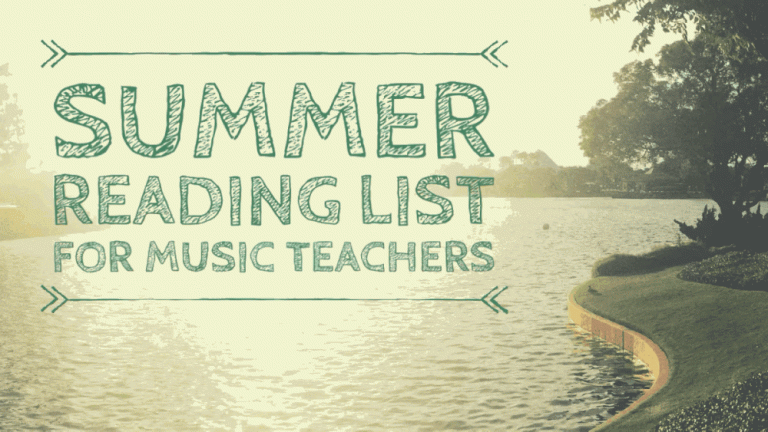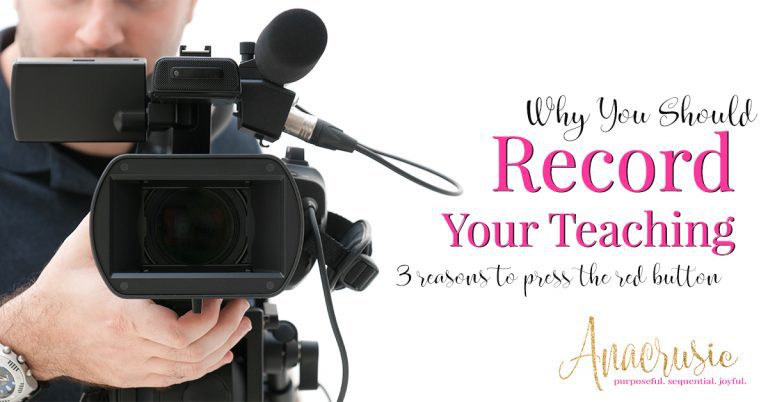Movement.
What do you think of when you hear this word? Folk dancing? Dalcroze? Uncomfortable? These are all common thoughts that run through my head when thinking about movement. Well, the first two for sure, but the last one not so much anymore.
You see, I used to be petrified of “movement.” My parents took me out of tap lessons when I was five to get me started on piano lessons, a fact that I simultaneously thank and curse them for every single day. I’ve always felt that movement is inextricably linked to music, although I haven’t necessarily always represented that opinion in my elementary music classes. After years of training, I’ve found that there are a million different ways to use movement in the music classroom. There’s folk dance and body percussion, there’s purposeful and creative. But where do you start?
If you feel like you are at a loss for finding a way to incorporate movement in your music classroom beyond the traditional folk dance or play party, this post is for you. I guarantee there are easy access points for you to start extending your curricular goals through purposeful and creative movement immediately. If you are still at a loss, here are three quick ways to start using movement in your classes, tomorrow.
#1 – Create with what your students already know
Do you use folk dances or play parties in your class? Have you experimented with locomotor or non-locomotor movement with your little ones? If so, your students already have a vocabulary bank from which to build a student-created movement piece. A simple place to start is by using the folk dance tradition.
Since many of the recordings used for folk dances have a simple, repeated form, start by listening to your selected piece of music (New England Dance Masters Recordings are fabulous for this!). After you have sketched out the form with your students, ask them to consider some of the movements you usually do during a folk dance. Write these suggestions and build a bank of movement vocabulary.
After you’ve decided on the form and what movements your class already knows, start composing the dance together. Have students decide what movements feel good where and what order they should go in? Are we moving 8 beats to the left? What usually happens after that? Are we going to change formation? Find a way to change partners? The possibilities are endless!
The same process can take place for younger students who may not have had experiences with more advanced folk dances. Create a form with locomotor and non-locomotor movements they are familiar with. Find points of interaction or formation change. They will be so excited to create a new dance that is all their own!
#2 – Find easy access points in activities you do regularly
Many of our curricular goals in the elementary music classroom consist of melodic and rhythmic elements. It’s pretty safe to say that after each and every presentation lesson, we want to find as many ways as possible for students to practice each element and show what they know. Movement is a wonderful way to do so.
Not only are you giving students a differentiated way to exhibit their knowledge, but many students feel the most musical through movement. Although clapping a rhythm pattern is a precise and sound pedagogical tool, why not create body percussion sequences to show rhythm patterns? Why not use locomotor movement to show melodic contour, by moving forward and backward for ascending and descending patterns? Although seemingly abstract, these additional practice techniques will both reinforce student comprehension and simply make it “click” for students who need a kinesthetic approach.
#3 – If you want purely student created, improvisatory movement, try mirroring.
I’ll never forget the first time I did a mirroring activity with my third grade class. I dimmed the lights and put on Bobby McFerrin’s Circle Songs. Each and every student was silent, focused, and engaged. When we finished, I turned the lights back up and one sweet friend exclaimed “I feel like we just did yoga!”
Its the simplest way to just get kids to explore. If you notice students are starting to get to “arm-y,” try leading with different body parts, levels, and facings. To decide who is the “leader,” have a discreet aural cue, like a triangle, to let students know when it’s time to switch. Eventually, they won’t even need the cue and will be able to seamlessly move back and forth.
This is simply scratching the surface.
Of course, this is by no means a comprehensive list, but will hopefully give you some ideas about how to start using movement in your classroom. I try to remember that while some kids are most musical singing, and others are most musical playing instruments, there are others who are most musical by moving.


